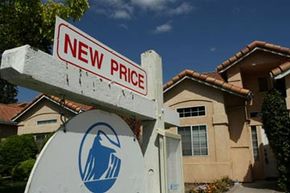You've just bought the home of your dreams, signed the contract and packed the moving van -- you're all set, right? Not if you haven't sold your current home first. So you put it on the market and you wait. And wait. And wait. In many cities where it makes more financial sense to rent than own, buyers may simply not be interested. In others, buyers do come along, but they don't have enough money saved for a down payment or their credit isn't good enough. How will you ever sell this house?
For many, the rent-to-own home may be the best option. Also called a lease-to-own house, the process works similarly to a car lease: Renters pay a certain amount each month to live in the house, and at the end of a set period -- generally within three years -- they have the option to buy the house. Each month of rent they pay is income for the seller, while a portion of it goes toward a down payment to eventually buy the home.
Advertisement
Both renters and sellers need to be very clear about the contract they draw up before they agree to this arrangement. Renting-to-own has advantages and disadvantages for both parties. Sellers who have already bought a new house will have relief from paying two mortgages at once, and in a slow housing market with many homes for sale, this may be their best option. Buyers who can't yet afford a house may be able to get one more quickly.
Read on to find out how the rent-to-own process works.
Advertisement


